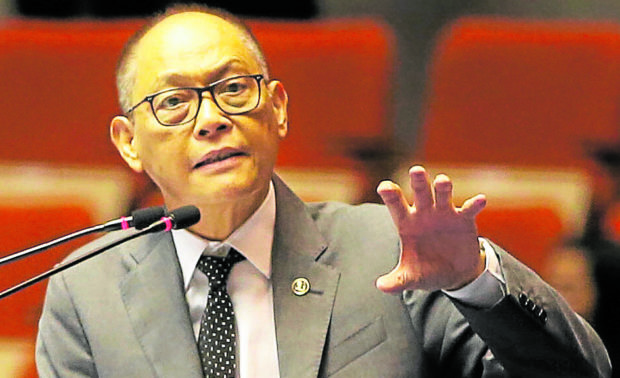In spite of the continuous increase in the national government’s debt stock, the Marcos administration aims to achieve an “A” level investment grade rating from at least one of the three major global credit rating agencies before its term ends in June 2028, according to Finance Secretary Benjamin Diokno.
During a press briefing, Diokno revealed that the Marcos economic team has engaged with visiting missions from Fitch Ratings and Moody’s Investor Service, and has met with representatives of S&P Global Ratings during their recent trip to Washington DC.
Diokno stated that the top three credit rating agencies, all based in New York City, are optimistic about the Philippines. “They have no concerns about our ability to meet our borrowing obligations.”
He mentioned that Fitch Ratings upgraded the Philippines’ outlook on its “BBB” rating from “negative” to “stable” last May.
Fitch Ratings improves outlook on PH to stable from negative
However, Diokno noted that Fitch was the most conservative agency among the three and gave the Philippines the lowest rating as a sovereign long-term borrower.
According to Fitch’s rating scale, BBB is between the minimum investment grade of “BB” and the minimum A-level rating of “A”.
Moody’s rates the Philippines at “Baa2,” one notch above the minimum investment grade of Baa3 in its rating scale. Baa2 is also two notches away from the A-level bottom rung of “A”.
Additionally, S&P Global rates the Philippines at BBB, two notches above the minimum investment grade and one notch away from the A-level rating band.
“They update their ratings every two years, which is quite slow, but our goal is to achieve an ‘A’ rating from at least one of the three major agencies before the President’s term ends,” Diokno said.
“We do already have an ‘A’ rating from the Japan Credit Ratings Agency (JCRA) and even a top-of-the-scale ‘AAA’ rating from China (Lianhe Credit Rating),” he added.
Japan Credit Rating Agency affirms A- with stable outlook of PH
During the height of the COVID-19 pandemic in June 2020, JCRA raised the Philippines’ rating to three notches above the minimum investment grade.
Meanwhile, China Lianhe’s AAA rating signifies that the borrower has an extremely strong capacity to pay its financial commitments, is highly unlikely to be affected by adverse economic conditions, and has the lowest expectation of default risk.
The Philippine government issued Panda bonds as part of its efforts to diversify funding sources, with an initial issuance of 1.5 billion renminbi ($230 million) in 2018, followed by 2.5 billion renminbi ($363 million) in 2019.
As of the end of May, the national government’s total outstanding obligations reached a new peak at P14.1 trillion.
Of this amount, 68 percent or PP9.59 trillion was borrowed from domestic lenders and 32 percent or P4.51 trillion was sourced from foreign lenders.
-CSN
Denial of responsibility! SamacharCentrl is an automatic aggregator of Global media. In each content, the hyperlink to the primary source is specified. All trademarks belong to their rightful owners, and all materials to their authors. For any complaint, please reach us at – [email protected]. We will take necessary action within 24 hours.

Omprakash Tiwary is a business writer who delves into the intricacies of the corporate world. With a focus on finance and economic landscape. He offers readers valuable insights into market trends, entrepreneurship, and economic developments.
Denial of responsibility! Samachar Central is an automatic aggregator of Global media. In each content, the hyperlink to the primary source is specified. All trademarks belong to their rightful owners, and all materials to their authors. For any complaint, please reach us at – [email protected]. We will take necessary action within 24 hours.


